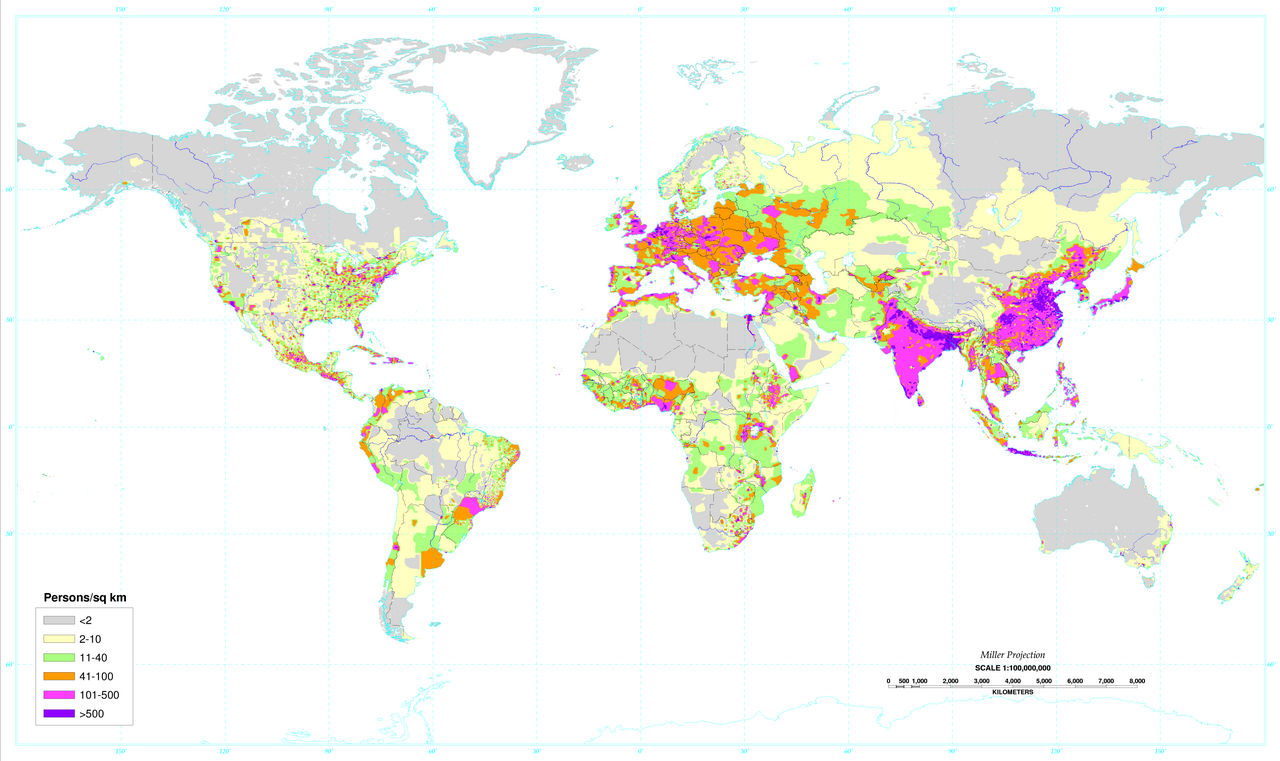Tomice
Passionate Smart-Ass
Civ kinda has trouble with sea tiles because it has a barely more than non-existent trade system and refuses to give powerful tile bonuses to represent the reasons why humanity has spent much of its history inhabiting every coast it can.
The sea gives you two things, a hell of a lot of food, and a hell of a lot of trade. There's basically no excuse not to make fish resources powerful enough to drag us to the shore in search of them (because obviously fish are nothing compared to wild sugar growing in a marsh).
Exactly, the importance of coasts for human development is immense.
Here is a population density map to prove it:

Densely populated regions in the Americas and Oceania are almost exclusively coastal. The major exception is the east of the United states where there's a connection from Chicago to New Orleans over the Missisippi and the artificial Chicago portage.
The situation on Europe and Asia is similar - most of the non-coastal population lives along the Rhein, Danube, Ganges and Yangtze rivers. Still, there is a bit more landlocked population, probably due to the long historical development of these regions allowing for better infrastructure like roads, railroads and canals.
No matter what, before the 19/20th century (trains, cars, planes) most of mankind was dependent on water-based trade and transport if they wanted to live from more than just subsistence. Even nowadays, being landlocked is almost a guarantee for a country to be poor. See this Wikipedia article: Click
